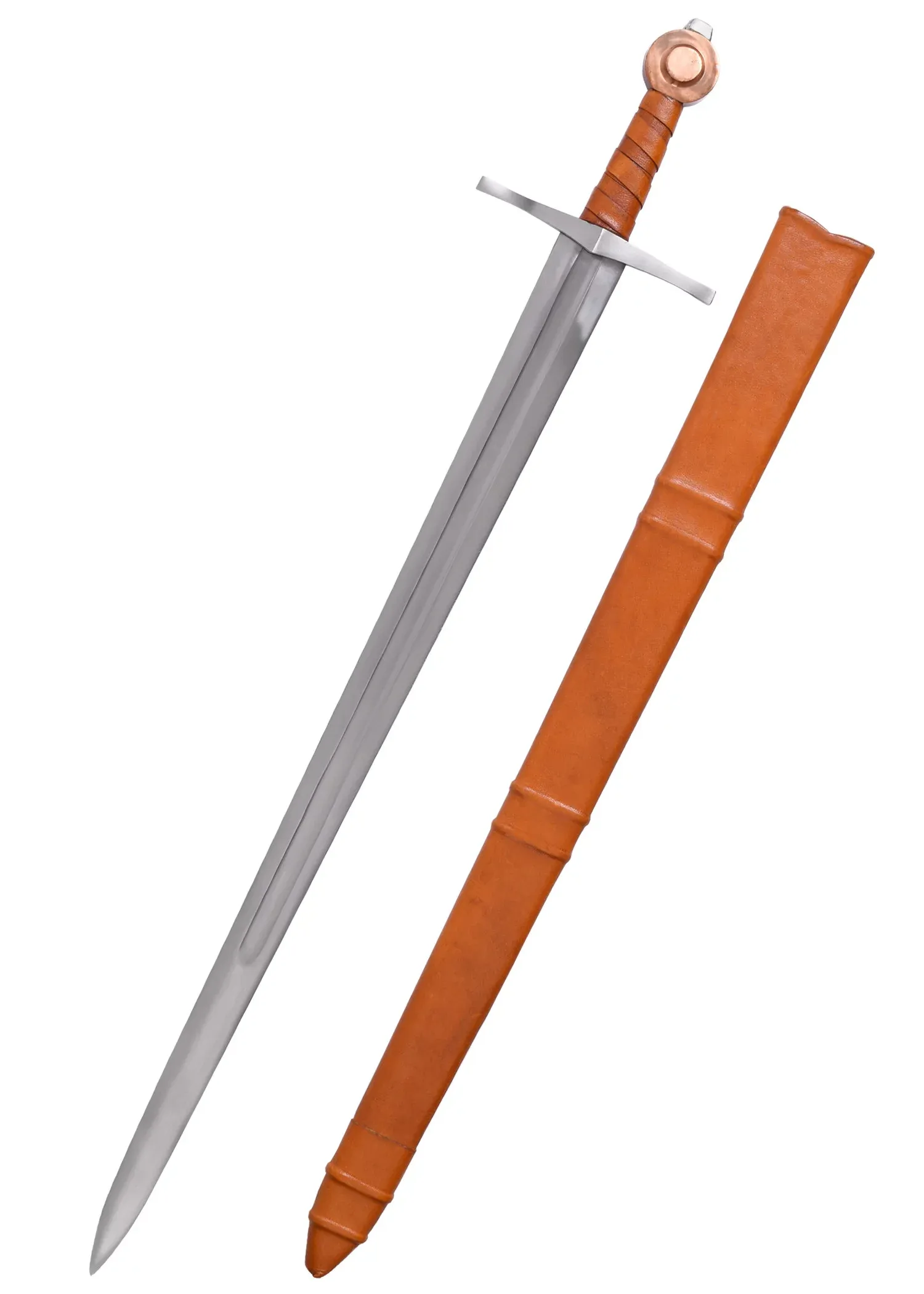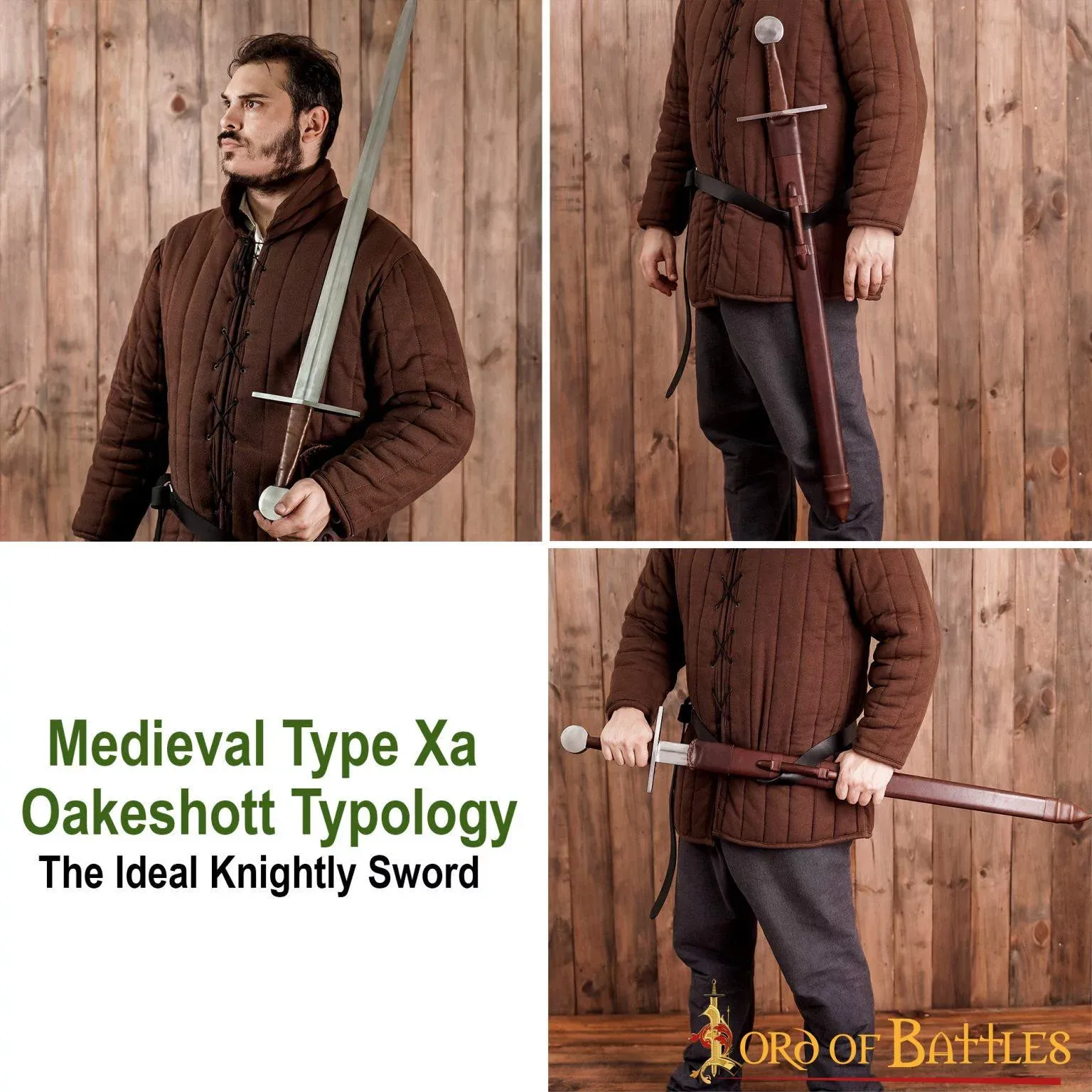What is the Oakeshott typology?
The Oakeshott typology represents an innovative classification system developed by Ewart Oakeshott, which has become a reference for the study of medieval European swords. This method, widely used by archaeologists and historians, allows for the categorization of swords mainly based on their morphological characteristics, considering both the blade and other components.

Origin and Objectives of the System
In the early 20th century, figures like Jan Petersen had begun to establish typologies for Viking swords, focusing mainly on the hilt and blade. However, it was Ewart Oakeshott who expanded this approach by integrating all parts of the sword into his classification. His system considers elements such as profile, cross-section, length, grooves, tip, hilt, and the sword's purpose.
The main objectives of the Oakeshott typology include:
- Identifying and dating medieval swords more accurately, primarily from the 11th to the 16th centuries.
- Providing a study tool for professionals and enthusiasts interested in historical fencing and medieval weaponry.
- Offering a comprehensive approach that goes beyond the traditional parameters of the time.
How the Oakeshott Typology Works
The Oakeshott typology is based on Petersen's Viking classification, merging late Viking and early medieval swords. This system groups swords into main types, numbered from X to XXII. Additionally, it introduces variants by adding letters to the main types, as in the case of XVIIIa or XXa. The typology is defined by:
- Blade profile and cross-section: determines whether the sword is better suited for cutting or thrusting.
- Length and width of the blade: general dimensions that characterize the sword.
- Grooves: slots that reinforce the structure and reduce weight.
- Shape and sharpness of the tip: indicates whether the sword was designed to pierce armor or for cutting.
- Hilt and guard: secondary aspects, but relevant for dating and classifying swords.
The complexity and richness of this system make it adaptable, allowing scholars to efficiently classify swords from that dynamic period.
Importance and Applications
The Oakeshott typology has solidified its role as an essential tool in the research of medieval swords, achieving:
- Precise dating of historical finds.
- Understanding technological and military evolution in Europe from swords optimized for cutting to those capable of piercing armor.
- Offering an international standard used and updated by specialists.
Oakeshott emphasized that his system is a flexible guide, recognizing the inherent diversity of medieval weaponry, which allows for a more realistic and tailored analysis of swords.
Connection with Viking Swords
Although the typology is primarily oriented towards medieval swords, it also encompasses the transition from Viking swords, with type X serving as a link between the two periods. This facilitates tracking the evolution of weaponry from the Viking age to the medieval period.

Main Characteristics Considered
- Blade profile
- Cross-section
- Blade length
- Number and shape of grooves
- Tip shape
- Type of hilt and pommel
- Average weight
- Main function (cutting or thrusting)
- Era of use
The Oakeshott typology remains a key resource for the study and understanding of medieval European weaponry, integrating a comprehensive approach that surpasses the limitations of previous classifications.
















